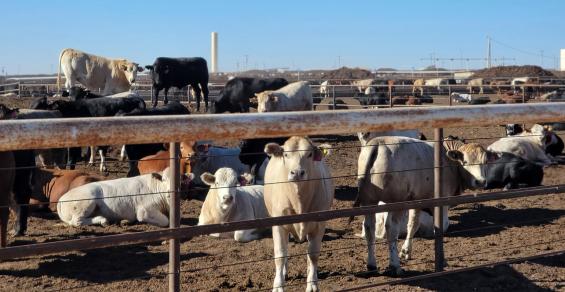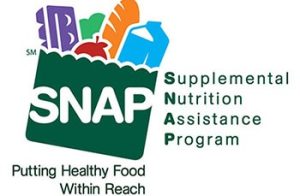The Agricultural and Food Policy Center at Texas A&M University, AFPC, recently released a new publication to help livestock producers address a variety of risks that may affect their operations.
The new publication, “Where’s the Risk?: A Livestock Risk Management Handbook,” was authored by Bart Fischer, co-director of the AFPC in Texas A&M’s Department of Agricultural Economics, Bryan-College Station. Co-authors were Justin Benavidez, assistant professor and Texas A&M AgriLife Extension Service economist at the Texas A&M AgriLife Research and Extension Center in Amarillo, and Amy Hagerman, assistant professor and Oklahoma Cooperative Extension Service specialist, Oklahoma State University, Stillwater.
“Agricultural producers face a litany of risks, from natural disasters to market forces that are far beyond their control,” Fischer said. “At the moment, over half the United States is facing some level of drought, and the cost of inputs have wreaked havoc on agricultural producers over the past year. Unfortunately, in particular, livestock producers historically have had few tools at their disposal for managing risk, largely relying on maintaining animal health and managing costs to stay afloat, in addition to limited use of futures and options.”
He noted future options, exchange-traded contracts that provide price protection for cattle producers is one risk management option.
See, Kubota debuts new machines, celebrates 50th Anniversary
“While use of futures and options by cattle producers continues to be quite low, a number of other risk management tools have been made available to livestock producers,” Fischer said. “In this handbook, we endeavor to provide an overview of those tools.”
He said while most of these tools are broadly applicable to a number of different species, the focus primarily is on cattle.
“And because livestock ownership and forage production often go hand in hand, this handbook covers both topics,” Fischer said.
Chapters in the new 47-page publication include:
— Programs Offered by the U.S. Department of Agriculture’s Farm Service Agency, FSA. This chapter addresses the variety of FSA programs available to livestock and mixed crop/livestock producers to address production risks from natural disasters. This includes programs that address the impact of adverse events on land, including the Livestock Forage Program, LFP, and the Noninsured Crop Disaster Assistance Program, NAP.
The chapter also addresses disaster response programs that result in adverse death loss, such as the Livestock Indemnity Program, LIP, and the Emergency Assistance for Livestock, Honeybees and Farm-Raised Fish Program, which covers losses not addressed in LFP, NAP or LIP. The chapter provides an overview of these alternatives and is intended to provide educational information for producers as of the program guidelines in 2021.
“It is important to understand these programs can and do change, and producers who are interested in participating should contact their local Farm Service Agency office to learn about current eligibility and terms,” said Hagerman ’09, Texas A&M Department of Agricultural Economics.
— Programs Offered by USDA’s Risk Management Agency, RMA. Federal crop insurance, administered by RMA, provides coverage for agricultural producers, with producers paying for a share of the premium. Row crops have long been covered by Multi-Peril Crop Insurance policies such as Revenue Protection and Yield Protection, that are familiar to crop producers.
“Under the Federal Crop Insurance Act of 1980, spending on livestock policies was limited to $20 million per fiscal year,” Fischer said. “As a result, while RMA offered crop insurance policies for livestock producers, participation was very limited. The $20 million limitation was eliminated in the Bipartisan Budget Act of 2018, and the impact could be seen almost immediately.”
For example, Fischer noted the change resulted in an order-of-magnitude increase in the liability insured by livestock policies at RMA–increasing from just over $500 million in 2018 to just over $6 billion in 2019. By 2021, the liability insured by livestock policies had grown to more than $14 billion.
He noted a new policy currently under development would provide revenue coverage for weaned calves.
“One insurance product that will soon come on the market that we mention in the publication, Weaned Calf Revenue Protection, is being developed by AgriLogic here in College Station,” he said.
— Risk Management Using the Futures Market. Trading futures has evolved over time to serve as a pillar of risk management in agricultural production as well as one of agriculture’s primary methods of price discovery. Futures contracts originated as a mechanism to reduce the risk of trading grains from harvest to delivery, and now futures contracts exist for a variety of commodities, including grains, livestock, commodities, energy, metals and financial derivatives that represent companies and financial instruments.
“Futures markets provide buyers and sellers of commodities with the opportunity to establish prices for future delivery,” Benavidez said. “It is a means of mitigating risk through a central marketplace that serves as a clearinghouse and establishes the rules of the game for buyers and sellers.”
After reviewing hedging, discussing budgets and break-even prices, and detailing the structure of futures and options contracts, this section provides brief examples of hedging strategies using futures and options, he said.
The publication also includes a checklist for producers to use in evaluating the various options at their disposal.
“Our hope is that producers will take the opportunity to avail themselves of the litany of tools that are available,” Fischer said.
New publication provides overview of federal, private-sector risk management tools






